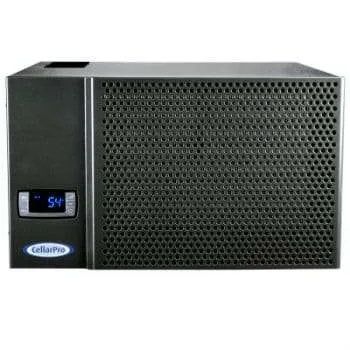A Complete Guide to Installing Wine Cellar Cooling Units: Style by Style
Creating the Ideal Environment for Your Wine Collection
A wine cellar is more than just a storage space; it’s a carefully optimized environment where every bottle can age to perfection. Wine cellar cooling units are essential for maintaining the right temperature and humidity, protecting your collection for years to come. Installation requirements differ depending on the unit type—some are DIY-friendly, while others need professional expertise. Here’s a breakdown of through-wall, split, and ducted systems to help you choose and install the perfect cooling unit for your cellar.
The Role of Cooling Units in Wine Cellar Perfection
Proper wine storage hinges on consistency: a temperature around 55°F and humidity between 50–70%. A cooling unit ensures these conditions, preventing wine from aging too quickly or slowly and keeping corks hydrated to avoid oxidation or spoilage. Whether it’s combating excessive dryness or humidity, a well-installed cooling unit creates a stable environment, enhancing the longevity and quality of your collection.
Installation Steps for Different Cooling Unit Types
- Overview: Self-contained units that circulate air within the cellar and exhaust heat into an adjacent space or outdoors. Ideal for cellars of 100–2,000 cubic feet.
- Installation Steps:
- Cut an opening in the wall to accommodate the unit.
- Build a frame for support and structural integrity.
- Add vent framing and shelving for stability.
- Connect a condensate drain line for moisture removal.
- Overview: Designed for larger cellars, split systems separate the motor and condenser to reduce noise and vibration. Components are connected by pressurized lines and require professional HVAC installation.
- Key Features: The condenser is placed outside, while the low-profile motor sits discreetly inside the cellar. Ideal for quiet and precise climate control.
- Overview: These versatile systems use ductwork to circulate air, offering the quiet operation of split systems without pressurized lines. They can be installed above, below, or adjacent to the cellar.
- Installation Advice: While some DIYers can manage installation, hiring an HVAC professional is recommended due to the system’s size and complexity.
Conclusion
Installing the right cooling unit is crucial for maintaining a wine cellar’s optimal environment. Whether you choose a through-wall, split, or ducted system, proper installation ensures your collection matures to its full potential, preserving both quality and value.






